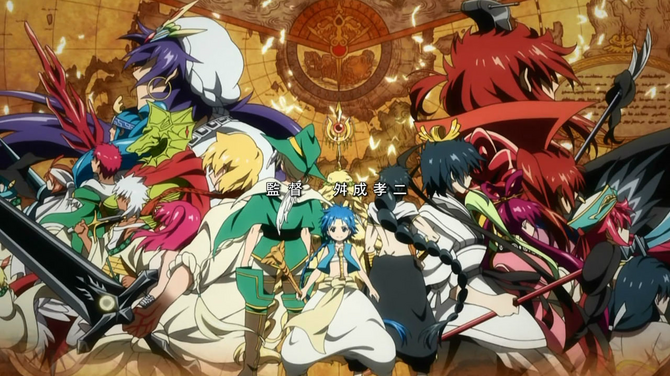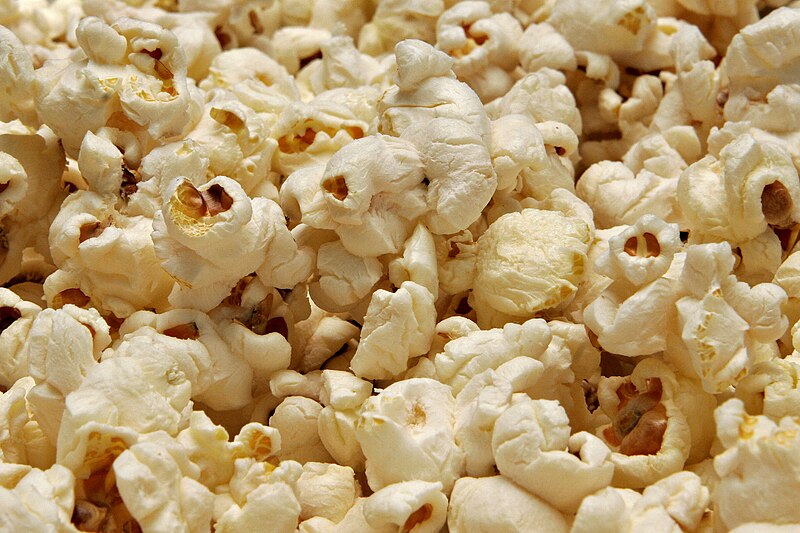こんにちは、みなさん!
今日は二月二十八日です。木曜日ですよ。
みなさん!!!私はインターネットを見ながら、いいウェブサイトを見つけた。ウェブサイトは日本語について話します。毎日、新しいぶんぽうとことばがあります。そして、かんじのリストがあります。今から、私はこのウェブサイトで日本語をべんきょうします。
下に、リンクですよ!
http://japanese.about.com
http://japanese.about.com/od/japanesevocabulary/Japanese_Vocabulary.htm
http://japanese.about.com/library/blkodarchives.htm
みなさん、見てくれませんか。みなさんもウェブサイトはいいとおもっていますか。
じゃあね!
ねこみみ
Thursday, February 28, 2013
Sunday, February 24, 2013
「スウィーツ」
こんばんは、みなさん!
今日は二月二十四日です。日曜日ですよ。
昨日、私の友達のうさぎくんは私に新しいデザートの店について話しました。うさぎくんは、「その店はプリンストンの中に一番おいしいデザートがあります」といいました。ですから、今朝、私はとても行きたかったです!その店のなまえは、「スウィーツ」です。いっしょに、私はうさぎくんと店に行きました。
「スウィーツ」の中にたくさんデザートがありました!ケーキやアイスクリームやくだものがありました。私はうさぎくんにたくさんデザートについて話しました。
私:ワアア!たくさんスウィーツがあるんですね!
うさぎくん:はい、そうです。
私:よくこの店に何か買いに来るんですか、うさぎくん?
うさぎくん:はい。毎週の日曜日、ぼくはここに来ます。いつもたのしかったです。
私:よく何を買いますか。
うさぎくん:そうですね。。。日曜日はたいていあかるくて、あたたかい日で、たいていぼくは日曜日に来るので、買うのが一番いいものはアイスクリームです。
私:アアッ、そうですか。じゃあ、日曜日にアイスクリームは一番いいですから、いっしょにアイスクリームを買いませんか。
うさぎくん:ウン、ぜひ。
私:うさぎくんの好きなフレーバは何ですか。
うさぎくん:たいてい、ぼくはコーヒーのアイスクリームを買います。ねこちゃんは?
私:えっと。。。私はピーナッツバターがとても好きですから、私はピーナッツバターのアイスクリームがほしいですよ!でも、ちょっとへんなんですね。この店はそのフレーバがありますか。
うさぎくん:はい、そうだとおもいます。
私:いいんですね!そのフレーバを買って、食べたいです!
うさぎくん:ウン。そして、ぼくはコーヒーのアイスクリームを食べたいです。じゃあ、今、買いましょう。
私:はい!ハハハ!
それから、私たちはアイスクリームを買って、店の外に食べに行きました。アイスクリームはとてもおいしかったですよ。
じゃあね、みなさん!
ねこみみ
今日は二月二十四日です。日曜日ですよ。
昨日、私の友達のうさぎくんは私に新しいデザートの店について話しました。うさぎくんは、「その店はプリンストンの中に一番おいしいデザートがあります」といいました。ですから、今朝、私はとても行きたかったです!その店のなまえは、「スウィーツ」です。いっしょに、私はうさぎくんと店に行きました。
「スウィーツ」の中にたくさんデザートがありました!ケーキやアイスクリームやくだものがありました。私はうさぎくんにたくさんデザートについて話しました。
私:ワアア!たくさんスウィーツがあるんですね!
うさぎくん:はい、そうです。
私:よくこの店に何か買いに来るんですか、うさぎくん?
うさぎくん:はい。毎週の日曜日、ぼくはここに来ます。いつもたのしかったです。
私:よく何を買いますか。
うさぎくん:そうですね。。。日曜日はたいていあかるくて、あたたかい日で、たいていぼくは日曜日に来るので、買うのが一番いいものはアイスクリームです。
私:アアッ、そうですか。じゃあ、日曜日にアイスクリームは一番いいですから、いっしょにアイスクリームを買いませんか。
うさぎくん:ウン、ぜひ。
私:うさぎくんの好きなフレーバは何ですか。
うさぎくん:たいてい、ぼくはコーヒーのアイスクリームを買います。ねこちゃんは?
私:えっと。。。私はピーナッツバターがとても好きですから、私はピーナッツバターのアイスクリームがほしいですよ!でも、ちょっとへんなんですね。この店はそのフレーバがありますか。
うさぎくん:はい、そうだとおもいます。
私:いいんですね!そのフレーバを買って、食べたいです!
うさぎくん:ウン。そして、ぼくはコーヒーのアイスクリームを食べたいです。じゃあ、今、買いましょう。
私:はい!ハハハ!
それから、私たちはアイスクリームを買って、店の外に食べに行きました。アイスクリームはとてもおいしかったですよ。
じゃあね、みなさん!
ねこみみ
Tuesday, February 19, 2013
ケーキ
こんばんは、みなさん!
今日は二月十九日です。火曜日ですよ。
今日、私はダイニングホールに友達とばんごはんを食べに行きました。そこで、私はデザートのテーブルを見ました。今日は金曜日じゃないので、私はデザートを食べませんでした。でも、私は食べたかったですよ!
ですから、今日私はデザートについて話します!
デザートの中で、ケーキが一番おいしいです。
私はちょっとあまいケーキが好きです。でも、あますぎて、たくさんアイシングがあるケーキが好きじゃありません!くだもののケーキはたいていよさそうです。たとえば、バナナがあるケーキやいちごがあるケーキはおいしいです。でも、すっぱいケーキはあまりよくないです。
私の好きなケーキはピーナッツ・バターがあるケーキです。ちょっとへんなんですね!
みなさんは?ケーキを食べますか。どんなケーキが一番好きですか。
じゃあね、みなさん!
ねこみみ
今日は二月十九日です。火曜日ですよ。
今日、私はダイニングホールに友達とばんごはんを食べに行きました。そこで、私はデザートのテーブルを見ました。今日は金曜日じゃないので、私はデザートを食べませんでした。でも、私は食べたかったですよ!
ですから、今日私はデザートについて話します!
私はちょっとあまいケーキが好きです。でも、あますぎて、たくさんアイシングがあるケーキが好きじゃありません!くだもののケーキはたいていよさそうです。たとえば、バナナがあるケーキやいちごがあるケーキはおいしいです。でも、すっぱいケーキはあまりよくないです。
私の好きなケーキはピーナッツ・バターがあるケーキです。ちょっとへんなんですね!
みなさんは?ケーキを食べますか。どんなケーキが一番好きですか。
じゃあね、みなさん!
ねこみみ
Saturday, February 16, 2013
アニメ・ポースト:「マギ」!
おはようございます、みなさん!
今日は二月十六日です。土曜日ですよ!
昨日のばん、私はちょっとアニメを見ました!

このアニメのなまえは、「マギ」です。とてもすごいアニメですよ!
アニメの中に、たくさんおもしろくて、かっこいいキャラクタがいます。たとえば、アラジンがいます。アラジンはしゃしんの中にいます。青いかみがあります!
アラジンはとてもしんせつな人です。「Djinn」はアラジンに「wish」をあげました。アラジンはたくさんお金やたくさん女の人がほしがっていませんでした!友達だけほしがっていました。とてもよかった、ですね。
今まで、私はエピソードを六つ見ました。とてもいいアニメですよ!みなさんも見てくれませんか。
じゃあね、みなさん!
ねこみみ
今日は二月十六日です。土曜日ですよ!
昨日のばん、私はちょっとアニメを見ました!

このアニメのなまえは、「マギ」です。とてもすごいアニメですよ!
アニメの中に、たくさんおもしろくて、かっこいいキャラクタがいます。たとえば、アラジンがいます。アラジンはしゃしんの中にいます。青いかみがあります!
アラジンはとてもしんせつな人です。「Djinn」はアラジンに「wish」をあげました。アラジンはたくさんお金やたくさん女の人がほしがっていませんでした!友達だけほしがっていました。とてもよかった、ですね。
今まで、私はエピソードを六つ見ました。とてもいいアニメですよ!みなさんも見てくれませんか。
じゃあね、みなさん!
ねこみみ
Thursday, February 14, 2013
「インド・パーラース」!
おはようございます、みなさん、
今日は二月十三日です。水曜日ですよ。
昨日のばん、私はアルバイトをしました。私のアルバイトはたいていいいです。でも、昨日私はアルバイトのまえに日本語のレクチャもありました。とてもおもしろくて、たのしかったですけど、私は食べる時間がありませんでした。ざんねんでした!
きつねちゃんもレクチャとアルバイトがあったので、アルバイトから私はきつねちゃんとばんごはんについて話しました。
私:きつねちゃん、こんばんは!
きつねちゃん:ああ、ねこちゃん、こんばんは。
私:アルバイトがおわりましたね。どうでしたか。
きつねちゃん:とてもよかったです。でも、今私は食べたいです。
私:ああ、私も!いっしょに何か食べませんか。
きつねちゃん:はい、ぜひ。でも、今ダイニング・ホールは食べ物がありません、ね。どこで食べましょうか。
私:えっと。。。安いレストランはどうですか。
きつねちゃん:安いレストラン?ええ、いいですね。どのレストランはとても安いですか。
私:ええ、そうですね。。。「インド・パーラース」は安くて、とてもおいしいんです!あのレストランに行きましょうか。
きつねちゃん:はい、いいですよ。行きましょう。
ですから、いっしょに「インド・パーラース」に食べに行きました。レストランで、きつねちゃんはパニール・チッカ・マサラにしました。私は、チャナ・マサラにしました。私たちのばんごはんはとてもすごかったです!
私はインドのりょうりは好きです!みなさんも?
じゃあね、みなさん、
ねこみみ
今日は二月十三日です。水曜日ですよ。
昨日のばん、私はアルバイトをしました。私のアルバイトはたいていいいです。でも、昨日私はアルバイトのまえに日本語のレクチャもありました。とてもおもしろくて、たのしかったですけど、私は食べる時間がありませんでした。ざんねんでした!
きつねちゃんもレクチャとアルバイトがあったので、アルバイトから私はきつねちゃんとばんごはんについて話しました。
私:きつねちゃん、こんばんは!
きつねちゃん:ああ、ねこちゃん、こんばんは。
私:アルバイトがおわりましたね。どうでしたか。
きつねちゃん:とてもよかったです。でも、今私は食べたいです。
私:ああ、私も!いっしょに何か食べませんか。
きつねちゃん:はい、ぜひ。でも、今ダイニング・ホールは食べ物がありません、ね。どこで食べましょうか。
私:えっと。。。安いレストランはどうですか。
きつねちゃん:安いレストラン?ええ、いいですね。どのレストランはとても安いですか。
私:ええ、そうですね。。。「インド・パーラース」は安くて、とてもおいしいんです!あのレストランに行きましょうか。
きつねちゃん:はい、いいですよ。行きましょう。
ですから、いっしょに「インド・パーラース」に食べに行きました。レストランで、きつねちゃんはパニール・チッカ・マサラにしました。私は、チャナ・マサラにしました。私たちのばんごはんはとてもすごかったです!
私はインドのりょうりは好きです!みなさんも?
じゃあね、みなさん、
ねこみみ
Tuesday, February 12, 2013
Katakana Analysis Draft!
Hello, everyone!
As part of this week's Katakana project, Japanese students are supposed to write a little bit about how katakana is used in different sorts of situations. So, for my analysis draft, I found two instances of katakana usage that really caught my eyes.
The first is from a McDonald's campaign.

Disturbing image of Ronald McDonald aside, the well-known English slogan for McDonald's, which is "I'm Loving It," is written in katakana on the right. These are clearly loanwords that come directly from another language, and the purpose of subscribing these particular words in katakana was so that Japanese speakers would be able to understand.
But I cannot help but wonder - do they actually understand? These three words, when spoken, are actually still just English words. Even if they are in katakana, would a Japanese speaker who knows no English and does not recognize the slogan be able to understand what he or she has read? In such a case, the katakana would have no more meaning to the readers than if someone had written "I'm Loving It" in English from the start.
I also found this amusing sample of Japanese onomatopoeia.

Onomatopoeia are used to, basically, portray 'sound effects.' So to write onomatopoeias in katakana is doubly effective, because the reader then sounds out the katakana and can hear or feel the sound that the onomatopoeia is intended to represent.
Both anime and manga tend to use katakana-written onomatopoeias very liberally, and I've noticed that the way the katakana are presented can help with conveying the onomatopoeia's intended sound. For instance, pikapika for 'shine' or 'brightness' may be written in small, bubbly letters, while nyanya for a cat may be written in a long, curling line. The extra aesthetics help get the point across.
The above examples are just two instances in which katakana are used in the Japanese writing system, but there are, of course, far more. The different applications, and methods of application, are so wide, and so varied, that even native Japanese speakers seem to have trouble capturing the essence of katakana usage easily in a simple one-sentence definition.
Textbooks have tried to do so, but their answers seem to be vague, and each textbook may place more importance on one function of katakana than another. But, typically, the textbooks divide katakana usage into three categories: for loanwords, for onomatopoeia, and for emphasis. This categorization covers a very large range of possible usage of katakana in the simplest way; no doubt, that is why the textbooks classify them so.
As textbooks, perhaps that is the best that they can do in describing katakana, by speaking of them in such a vague, simple way. But, from my analysis, it seems that katakana has far more meaning as a complex part of Japanese culture - something that textbooks would no doubt have trouble to truly explain.
As part of this week's Katakana project, Japanese students are supposed to write a little bit about how katakana is used in different sorts of situations. So, for my analysis draft, I found two instances of katakana usage that really caught my eyes.
The first is from a McDonald's campaign.

Humbly borrowed from tofugu.com at:
http://www.tofugu.com/wp-content/uploads/2008/11/01_imlovinit.jpg.
Disturbing image of Ronald McDonald aside, the well-known English slogan for McDonald's, which is "I'm Loving It," is written in katakana on the right. These are clearly loanwords that come directly from another language, and the purpose of subscribing these particular words in katakana was so that Japanese speakers would be able to understand.
But I cannot help but wonder - do they actually understand? These three words, when spoken, are actually still just English words. Even if they are in katakana, would a Japanese speaker who knows no English and does not recognize the slogan be able to understand what he or she has read? In such a case, the katakana would have no more meaning to the readers than if someone had written "I'm Loving It" in English from the start.
I also found this amusing sample of Japanese onomatopoeia.

Humbly borrowed from bushtalk.blogspot.com at:
http://www.tjf.or.jp/eng/content/japaneseculture/images/tb_no13/t13_28.gif
Onomatopoeia are used to, basically, portray 'sound effects.' So to write onomatopoeias in katakana is doubly effective, because the reader then sounds out the katakana and can hear or feel the sound that the onomatopoeia is intended to represent.
Both anime and manga tend to use katakana-written onomatopoeias very liberally, and I've noticed that the way the katakana are presented can help with conveying the onomatopoeia's intended sound. For instance, pikapika for 'shine' or 'brightness' may be written in small, bubbly letters, while nyanya for a cat may be written in a long, curling line. The extra aesthetics help get the point across.
The above examples are just two instances in which katakana are used in the Japanese writing system, but there are, of course, far more. The different applications, and methods of application, are so wide, and so varied, that even native Japanese speakers seem to have trouble capturing the essence of katakana usage easily in a simple one-sentence definition.
Textbooks have tried to do so, but their answers seem to be vague, and each textbook may place more importance on one function of katakana than another. But, typically, the textbooks divide katakana usage into three categories: for loanwords, for onomatopoeia, and for emphasis. This categorization covers a very large range of possible usage of katakana in the simplest way; no doubt, that is why the textbooks classify them so.
As textbooks, perhaps that is the best that they can do in describing katakana, by speaking of them in such a vague, simple way. But, from my analysis, it seems that katakana has far more meaning as a complex part of Japanese culture - something that textbooks would no doubt have trouble to truly explain.
Sunday, February 10, 2013
Bonding!
こんにちは、みなさん!
今日は二月十日です。日曜日ですよ。
昨日はとてもたのしかったです!私の日本語のじゅぎょうは新しい学生がいるので、昨日いっしょに話しにレストランに行きました。私とくもくんは行きました。そして、とらちゃんとうさぎくんときつねちゃんといぬくんも行きました。
私たちはりっぱなインドのレストランに行きました。なまえは、「インド・パーラース」です。そこで、私たちはおいしい食べ物をちゅうもんしました。私はチャナ・マサラとサモサにしました。とてもおいしかったですよ!私の好きなインドの食べ物はサモサですけど、チャナ・マサラもとても好きですよ。日本語で私たちはたくさんものについて話しました。たとえば、私たちは好きな本と好きなえいがについて話しました。とてもすごいばんごはんでしたよ。
つぎ、私たちはえいがかんに行きました。私たちはちょっとへんでした!えいがを見たくなかったですが、えいがのバーターなポップ・コーンを食べたかったです。ですから、ポップコーンだけ買いました。えいがかんのそとにすわって、いっしょにポップコーンを食べました。
それから、大学のキャンプスに帰りました。いっしょにたのしいことをしましたから、今友だちがいます、ですね。
今日は二月十日です。日曜日ですよ。
昨日はとてもたのしかったです!私の日本語のじゅぎょうは新しい学生がいるので、昨日いっしょに話しにレストランに行きました。私とくもくんは行きました。そして、とらちゃんとうさぎくんときつねちゃんといぬくんも行きました。
私たちはりっぱなインドのレストランに行きました。なまえは、「インド・パーラース」です。そこで、私たちはおいしい食べ物をちゅうもんしました。私はチャナ・マサラとサモサにしました。とてもおいしかったですよ!私の好きなインドの食べ物はサモサですけど、チャナ・マサラもとても好きですよ。日本語で私たちはたくさんものについて話しました。たとえば、私たちは好きな本と好きなえいがについて話しました。とてもすごいばんごはんでしたよ。
つぎ、私たちはえいがかんに行きました。私たちはちょっとへんでした!えいがを見たくなかったですが、えいがのバーターなポップ・コーンを食べたかったです。ですから、ポップコーンだけ買いました。えいがかんのそとにすわって、いっしょにポップコーンを食べました。
それから、大学のキャンプスに帰りました。いっしょにたのしいことをしましたから、今友だちがいます、ですね。
Friday, February 8, 2013
Japanese 102!
こんばんは、みなさん!
今日は二月八日のあさです。金曜日ですよ!
一月に、私の日本語の先生のぞう先生は、「新しい学生はプリンストンに来ます」といいました。私はくもくんととてもうれしかったですが、休みには私たちはキャンプスにいなかったので、新しい学生に会いませんでした。でも、たいへんじゃないですよ!今週、ぞう先生はクラスのリストに新しい学生を入れました。じゃあ、今日その学生は日本語のじゅぎょうに来ました。じゅぎょうに入りましたから、学生に会いました!
私:おはようございます、先生!
くもくん:おはようございます、先生。
ぞう先生:おはよう、ねこみみさん。おはよう、あおくもさん。このあさ、新しい学生はこのじゅぎょうに来ます。
私:ほんとうに?すごい!私は学生に会いたいです!
くもくん:はい、ぼくも。
ぞう先生:ええ、いいですね。じゃあ、今来ますよ。
新しい学生はじゅぎょうのそとに来ました。
ぞう先生:ああ!新しいがくせいです!来て下さいね。
とらは入りました。
とら:おはようございます、みなさん!私はなつとらです。どうぞよろしく。
いぬは入りました。
いぬ:おはよう!ぼくはあきいぬです。よろしくよ!
うさぎは入りました。
うさぎ:あのう、おはようございます、先生とみなさん。ぼくは、ひるうさぎです。どうぞ、よろしく。
きつねは入りました。
きつね:みなさん、おはよう。私はくろきつねです。どうぞよろしく。
ぞう先生:新しい学生、こちらこそよろしく。じゃあ、こちらは私の学生です。
私:はじめまして!私はねこみみです。こちらこそぞよろしく。
くもくん:はじめまして。私はあおくもです。こちらこそよろしく。
ぞう先生:いいですね。じゃあ、日本語のじゅぎょうへ、ようこぞ!
今日は二月八日のあさです。金曜日ですよ!
一月に、私の日本語の先生のぞう先生は、「新しい学生はプリンストンに来ます」といいました。私はくもくんととてもうれしかったですが、休みには私たちはキャンプスにいなかったので、新しい学生に会いませんでした。でも、たいへんじゃないですよ!今週、ぞう先生はクラスのリストに新しい学生を入れました。じゃあ、今日その学生は日本語のじゅぎょうに来ました。じゅぎょうに入りましたから、学生に会いました!
私:おはようございます、先生!
くもくん:おはようございます、先生。
ぞう先生:おはよう、ねこみみさん。おはよう、あおくもさん。このあさ、新しい学生はこのじゅぎょうに来ます。
私:ほんとうに?すごい!私は学生に会いたいです!
くもくん:はい、ぼくも。
ぞう先生:ええ、いいですね。じゃあ、今来ますよ。
新しい学生はじゅぎょうのそとに来ました。
ぞう先生:ああ!新しいがくせいです!来て下さいね。
とらは入りました。
とら:おはようございます、みなさん!私はなつとらです。どうぞよろしく。
いぬは入りました。
いぬ:おはよう!ぼくはあきいぬです。よろしくよ!
うさぎは入りました。
うさぎ:あのう、おはようございます、先生とみなさん。ぼくは、ひるうさぎです。どうぞ、よろしく。
きつねは入りました。
きつね:みなさん、おはよう。私はくろきつねです。どうぞよろしく。
ぞう先生:新しい学生、こちらこそよろしく。じゃあ、こちらは私の学生です。
私:はじめまして!私はねこみみです。こちらこそぞよろしく。
くもくん:はじめまして。私はあおくもです。こちらこそよろしく。
ぞう先生:いいですね。じゃあ、日本語のじゅぎょうへ、ようこぞ!
Wednesday, February 6, 2013
The PE4 Overall Goal...
Welcome back, everyone, for another semester!
This class may be Japanese 102 now instead of Japanese 101, but we are still doing our same awesome blogging! And so, with the start of a new semester comes the start of another PE Cycle, PE4!
じゃあ、また!
ねこみみ
This class may be Japanese 102 now instead of Japanese 101, but we are still doing our same awesome blogging! And so, with the start of a new semester comes the start of another PE Cycle, PE4!
- Goal 4: Listening and Comprehending II
- To be able to better separate a speaker's fluid, natural conversation of vocabulary, accents, inflection, and pitch into individual words that I can then understand
- To be able to better understand a speaker's sentence as a whole, without having to necessarily translate each piece individually
- Ways to Achieve Goal 4
- Watch at least one hour of subbed anime each week and pay attention to how the subbed translation matches with what is actually said
- Listen to at least four Japanese songs from medium-pace to fast-pace each week, and focus on how the lyrics are separated into individual words
- Listen to at least two dialogues, from either the textbook or the classroom shadowing resources, and pay attention to not only what is being said, but to how it is being said
- Post at least three blog posts to this blog per week, at least one of which should be done in the form of a mock conversation
- Post at least one Radio Recording each week to Voice Board detailing a mock conversation
- Visit Office Hours or the Japanese Language Table at least once a week and hold a mock conversation
じゃあ、また!
ねこみみ
Monday, February 4, 2013
New Semester!
こんばんは、みなさん!
今日は二月四日です。月曜日ですよ。
'Semester Break'に、私はうちにいました!たのしかったですよ。でも、昨日、私はうちから行きました。大学に帰りました。
くるまとでんしゃとひこうきでりょこうをしました。たくさん時間がかかりましたよ!ちょっとざんねんでしたが、だいじょうぶでしたよ。
今、大学のキャンプスにいます。新しい’semester'がはじまります!この'semester'にも、私はがんばりましょう!
お休みなさい、みなさん!
ねこみみ
今日は二月四日です。月曜日ですよ。
'Semester Break'に、私はうちにいました!たのしかったですよ。でも、昨日、私はうちから行きました。大学に帰りました。
くるまとでんしゃとひこうきでりょこうをしました。たくさん時間がかかりましたよ!ちょっとざんねんでしたが、だいじょうぶでしたよ。
今、大学のキャンプスにいます。新しい’semester'がはじまります!この'semester'にも、私はがんばりましょう!
お休みなさい、みなさん!
ねこみみ
Subscribe to:
Posts (Atom)



